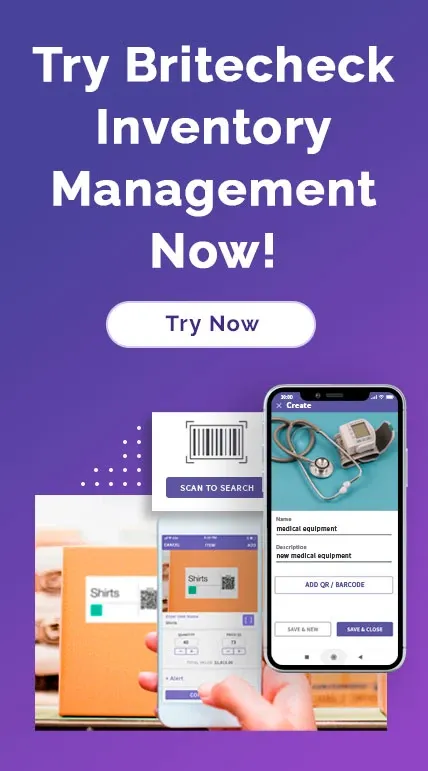Inventory Alerts: what they are and how you can leverage them for your Small Business
March 17, 2021
Staying on top of inventory is crucial for businesses of all sizes. More often than not, inventory holds the most significant value among the current assets in a balance sheet. Therefore, proper inventory management gives a business the best chance to thrive. By striking a healthy balance between the inventory coming in and going out, a business can effectively control the costs of non-capitalized assets and achieve optimal profitability.

For many businesses, however, managing inventory is easier said than done. According to research, 46% of all small and medium-sized enterprises do not know how to keep track of stock inventory or use manual methods. The good news is that inventory management tools exist to help you streamline your stock-keeping processes. With the right software, you can gain insight into all aspects of your inventory and take proactive measures to optimize your entire supply chain.
The Value of Inventory Alerts
Inventory management solutions come with several notable features. One of the most critical functions is the ability to deliver inventory alerts. These alerts give you real-time information about changes in your inventory level.
Many businesses configure low-stock alerts to prevent stockouts, but an inventory app can also notify you about new orders, upcoming shipments, and slow-moving stock. Comprehensive mobile-based solutions like Britecheck can also keep an eye on your inventory reorder points and inform you when and how much you need to order.
Leveraging Stock Alerts for Effective Inventory Management
Inventory alerts can be delivered as emails or push-notifications to your team or specific staff members in real-time. Below are four ways you can use these alerts to improve your business.
1. Maintain control of your supply network
Inventory stockouts are a costly issue for businesses. Studies show that companies lose $1.75 trillion annually to out-of-stock situations. Even more intriguing is that almost 25% of Amazon’s retail revenue comes from buyers who tried to purchase items in other stores, but they were out of stock.
Inventory alerts help you avoid this problem by keeping you on top of your stock levels at all times. They also save you the time and effort of manually tracking impactful inventory movements. Additionally, if you manage multiple selling channels, a back in stock alert app can notify you when new stock items are delivered to your warehouse. That way, you can ensure your stores always have enough inventory to fulfill orders when they come.
Experts recommend configuring low-stock alerts whose thresholds give enough safety stock for current and new orders. Set higher thresholds for popular, fast-selling items to avoid crisis situations and expensive rush shipping. If frequent ordering is too expensive, you can negotiate better pricing with key suppliers for bulk orders.
2. Respond better to demand fluctuations
Today’s enterprises operate in an environment of high competition and low consumer loyalty. Buyers across all sectors have many options in availability, quality, and price, which puts them in the driver’s seat. As a small business owner, you must empower your company to make timely responses to demand volatility. If you do not, without question, your competitors will.
Inventory alerts can give you a reliable, real-time view of your product’s performance in the market. Frequent low-stock alerts for particular items can be a reliable indication that your marketing strategies are working, and demand is increasing. On the other hand, alerts for slow-moving items could mean it is time to change your approach or run a promotion.
Whether positive or negative, frequent updates about inventory movements can help you to implement timely measures to align your supply with demand. That way, you can increase your customer service, enhance your margins, and achieve more predictable revenue across your entire value chain.
3. Optimize your working capital
Holding inventory means tying down the capital you could be using elsewhere. You have to store it, insure it, and suffer various logistical headaches to use it. Furthermore, holding more than the optimum amount of inventory poses significant business risks. By storing too much inventory, you risk losses should the market take a dive. You also open yourself up to potential write-offs down the road.
Keeping inventory at a minimum must be among your key business goals. A suitable inventory tracking app lets you configure inventory alerts to inform you precisely when and how much you need to order, based on parameters like current orders and supplier lead-times. These alerts can keep you from ordering more than you need and reduce the chances of accumulating unused inventory.
Inventory alerts can also tell you immediately a stock item goes beyond a preset threshold. That way, you can respond quickly with steps to return inventory to proper levels and keep your capital fluid.
4. Minimize stock-keeping errors
Implementing solutions to reduce manual work and errors can save your business a great deal of money. One inventory error can attract costs like paying for more staff hours and emergency shipping arrangements. Your enterprise can also suffer from unhappy customers and loss of market share.
An inventory app can be a simple and effective way to automate your stock tracking process. Britecheck, for example, features barcoding, which replaces paper-based, error-prone stocktaking. Adding alerts to the mix gives you a convenient tool that delivers reliable information about your inventory whenever you need it. With error-free reporting, you can increase your warehouse’s efficiency, reduce labor costs, and keep your customers happy.
The days of tracking stock by hand or listing them in spreadsheets are over. Today, technology solutions exist to keep you updated about your inventory position without dealing with paper or Excel formulas.
Sign up for a Britecheck free trial and experience the convenience of real-time inventory alerts.
